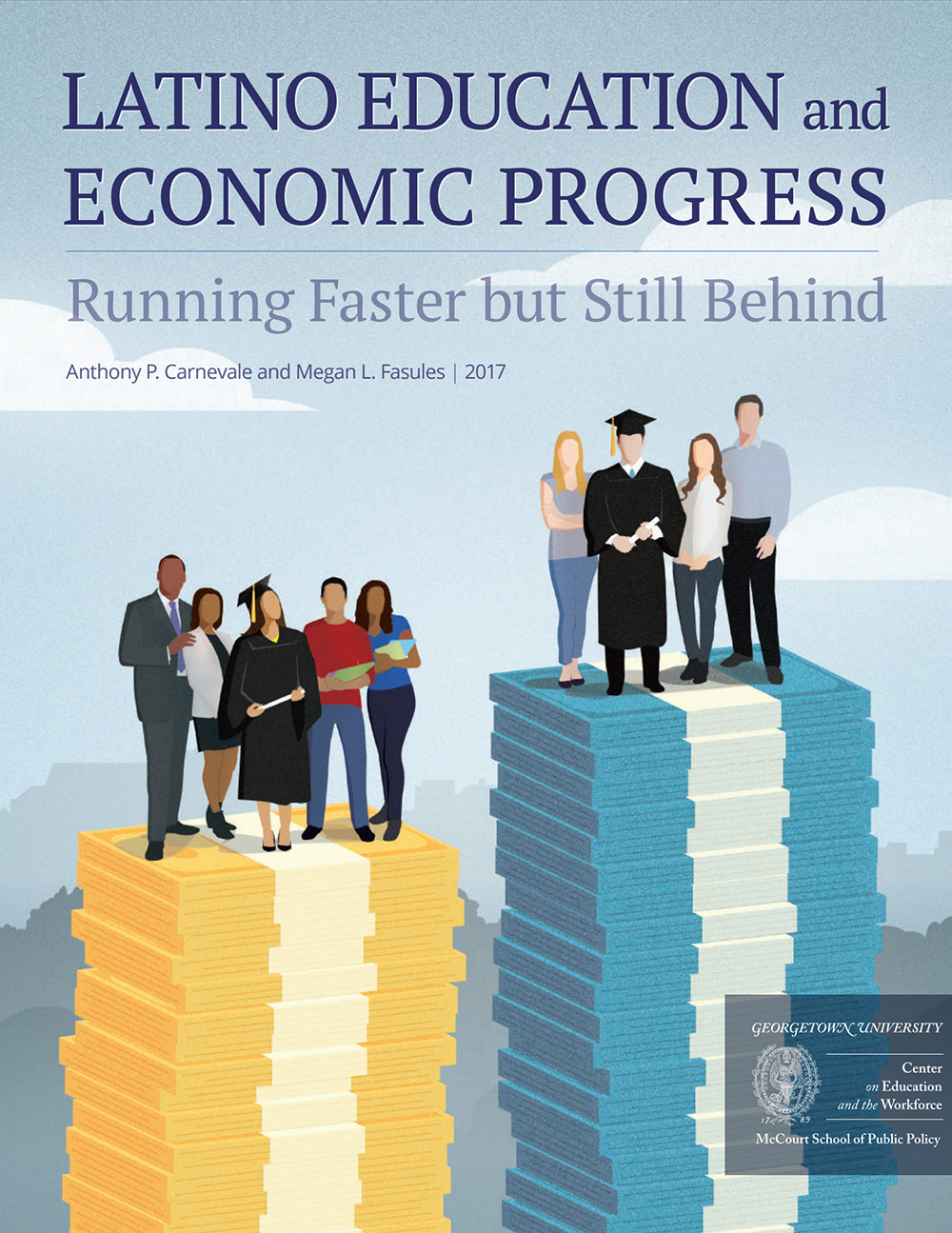Latino Education And Economic Progress
Running Faster but Still Behind
While Hispanic/Latino individuals are running faster in the education race, this report finds that they are falling farther behind White and Black/African American individuals in many crucial college outcomes. The good news though, is that with the right support, Hispanic/Latino individuals are poised for a surge in educational and economic success.
Key Findings
Video
Watch our video to learn about Latinos’ education and economic progress and the challenges they face.
Interactive Tool
The State of the Hispanic/Latino Population in 10 States: Explore the data on Hispanic/Latino educational attainment, earnings, and good jobs in ten states with the highest Hispanic/Latino populations.
Sources: Georgetown University Center on Education and the Workforce analysis of American Community Survey (ACS), 2011-2015.
Georgetown University Center on Education and the Workforce analysis of American Community Survey (ACS), 2003-2005 and 2013-2015, and Integrated Postsecondary Education Data System (IPEDS) first-time degree/certificate fall enrollment data, 2004 and 2014.
Resources
Our report explores the complex set of reasons that have kept the gender wage gap in place. Even when comparing men and women who have equal educational attainment and work in the same occupation, women still earn only 92 cents for every dollar earned by men.


